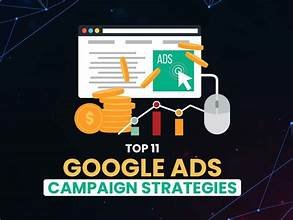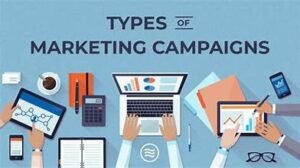
A Strategic Guide In the e-commerce sector, a cool application design is just a start of the development. To attract customers, secure their orders, and enhance your company, it is very important to efficiently utilize the paid advertising options. Google Ads is one of the platforms that is beneficial for e-commerce businesses to create a strong connection with customers who are looking for products. Here are the key strategies for successful Google Ads management pertinent to e-commerce businesses only.
1. Set Clear Campaign Goals:

Before designing the advertising campaigns, determine your goals . The goals of your Google Ads campaign are to be based on whether you want to increase sales, channel the traffic to your website, or publicize a special offer. Such objectives will dictate all the parts of the ads’ course of action.
– Common E-Commerce Goals
– Gain more online sales
– Frequently link to product pages from other pages
– Developing the image of the brand or visibility of the product
2.Choose the Right Campaign Types :

Google Ads bears many ad formats but for e-commerce, Search Ads and Shopping Ads are the winners.
– Search Ads : Turn up when people search for certain keywords. These ads that look like text, which are highly targeted, move the users directly to your product pages, therefore, they are quite useful in this case.
– Shopping Ads : These plug in the product images, prices, and titles of stores straight into Google Search results making them very visual and ideal for e-commerce.
3. Carry Out Comprehensive Keyword Research :

Keyword selection is the most important part of your campaign which can be your failure or success. Focus on:
– High-Intent Keywords: The phrases and words that potential buyers use when they search for products.
– Long-Tail Keywords : More specific and less competitive, leading to higher conversion rates.
Apart from Google Keyword Planner, discover the keywords which have more search and which relate to your products.
4. Optimize Landing Pages:

Your landing pages are the determining factor for clicks to transform into customers. Make modifications to a landing page so that it is pertinent to the advertised product, downloads fairly quickly, and has a crystal-clear Call to Action button.
Best Practices:I. Make sure there is a strong connection between the ad copy and the landing page content.III. Highlight the main product features, advantages, and prices.IV. Made the checkout process a breeze, which will improve user experience.
Correlate the ad copy to the landing page content
Stress the main product features, advantages, and pricing
Simplify the checkout process to give users a better experience.
5. Monitor and Optimize Performance

Google Ads management cannot be reduced to a one-time task. It needs to be continuously supervised to ensure one is getting the best ROI. The most important indicators of performance are:
Click-Through Rate (CTR): A high CTR means that users find your ads relevant and intriguing.
Conversion Rate: The rate of customers who click to buy or to perform the desired action.
Return on Ad Spend (ROAS): You earn revenue by investing in advertisements, for every dollar you spend.
Adjust bids, pause underperforming keywords, and test new ad copy or landing pages on a regular basis to optimize campaigns.
6. Use Remarketing to Boost Conversions

Remarketing lets you to follow up with visitors who first-time interact with your site but not convert, one strategy.<|disc_score|>
Example: Retargeting customers who have formerly shown interest in a particular product but did not purchase using product-specific ads.
Conclusion:

Google Ads is an e-commerce brand’s fundamental or irreplaceable tool of driving targeted traffic and hence, increasing sales. You can meet your goal of running successful campaigns with clearly set goals, selecting the correct campaign types, doing due diligence in keyword researching, improving the landing pages, and frequently tracking the campaigns.
The smart Google Ads management can be a vital weapon in your e-commerce business’s arsenal, outbid your rivals, get the high-intent customers to your website, and skyrocket your cost-effectiveness (ROI).

